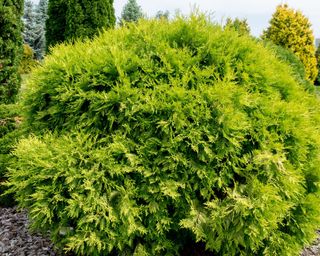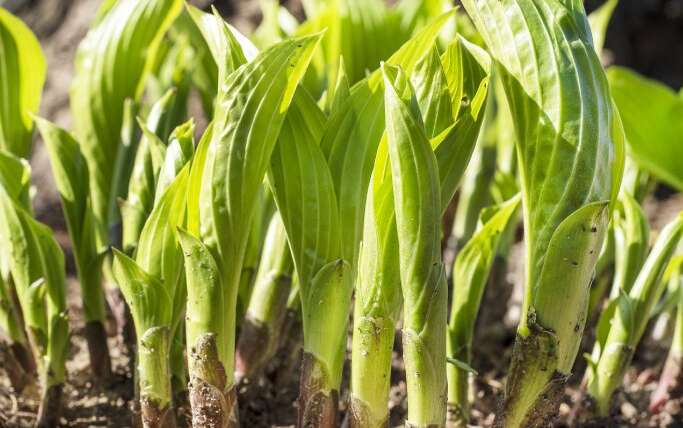There are plenty of reasons why it’s worth starting seeds at home. Planting your own seeds allows you to grow a wider variety of crops, save money, and have fun. And if you ask me, there’s no better cure for the winter blues than watching little seedlings grow into healthy transplants.
If you want to enjoy the benefits of seed starting, you need to understand the when factor. The ideal planting date varies by crop and region, so there isn’t a one-size-fits-all answer for when to plant seeds. However, learning the best time to start seeds in your area helps you form a closer connection with the land.
I’ll share dates for seed-starting in zone five so you can enjoy healthy and beautiful plants.
Where Is Zone Five?
Zone five has seen shifts in its boundaries due to USDA Plant Hardiness Zone Map updates.
The recent changes to the USDA Plant Hardiness Zone Map have altered the locations that belong to zone five. With that said, zone five is still reserved for colder areas of the United States. Large sections of New England, the Midwest, the Central Plains, and the Mountain West are located in zone five.
Some zone five cities include Burlington, Augusta, Sioux Falls, Minneapolis, Fort Collins, and Bozeman.
What Is the Climate in Zone Five?
 This zone not only faces cold winters but also grapples with lengthy ones.
This zone not only faces cold winters but also grapples with lengthy ones.
There’s no denying that zone five experiences its fair share of cold. The average annual low temperature falls between -10°F and -20°F (-23°C and -29°C), with below-freezing temperatures sticking around throughout most of the winter. That means that growing annual vegetables outdoors in the winter is difficult, even with the help of row covers, high tunnels, and cold frames. However, it is possible!
Not only does zone five experience cold winters, but it also has to deal with long winters. The first fall frost typically arrives sometime between mid-September and mid-October, and the last spring frost occurs between early May and early June. That means the frost-free growing season is only four to five months long.
Although winters are cold, the summers can still get hot. Average daily temperatures are above 80°F (27°C) in most areas, and daily highs rise above 90°F (32°C) a handful of days.
How to Determine When to Start Seeds
 Timing is crucial: starting seeds at the appropriate time is important.
Timing is crucial: starting seeds at the appropriate time is important.
With a cold winter and a short frost-free growing season, starting seeds indoors in zone 5 extends the growing season. Planting healthy tomatoes and basil transplants outdoors when the weather warms allows you to enjoy a bountiful harvest despite the short growing season. However, for this to happen, you must start seeds at the right time.
If you start your seeds too soon, the transplants will be leggy and rootbound by the time it’s warm enough to plant them outdoors. And if you start them too late, the plants may not mature before the first frost arrives.
So, how do you determine when to start planting seeds in zone five? When it comes to spring planting, look up your last frost date, and don’t forget it. Use this date to determine when you should transplant seedlings and, therefore, when to plant seeds.
Let’s look at the ‘Green Zebra’ tomato as an example.
If your average last frost is May 15, you can safely transplant tomato seedlings outdoors on June 1. The two weeks between May 15 and June 1 serve as a buffer and ensure the danger of frost has passed. Then, use the June 1 planting date to determine the date to plant seeds indoors. Looking at the seed packet, you’ll learn you should start your tomato seeds four to six weeks before transplanting—sometime between April 20 and May 4.
When it comes time to figure out seed-starting for fall transplants, take note of your predicted first fall frost date and the time the day length drops below ten hours. Since your goal is to have your fall crops mature by the first ten-hour day, you need to transplant seedlings one to three months before this date and start seeds even earlier.
Starting Seeds in Zone Five
While figuring out when you need to sow each type of seed is fun to some people, it’s a big task! That’s why I’ve outlined when to start certain types of seeds in zone 5.
When to Start Vegetable and Flower Seeds for Spring Planting
 Planting seeds within specific dates ensures your seedlings mature precisely for transplanting.
Planting seeds within specific dates ensures your seedlings mature precisely for transplanting.
The best time to transplant spring seedlings depends on the specific plant. Hardy greens like kale and cabbage tolerate cold temperatures and even light frosts, but the same weather stresses summer crops like tomatoes and peppers. Starting your seeds during the following dates allows you to grow seedlings that reach maturity at the ideal transplanting time.
Note that this is just an estimate. To ensure the most accurate frost date, consult the National Gardening Association’s Frost Date Calculator. This gives you the best-estimated date for your individual zip code. From there, follow the instructions on your seed packet to determine when to begin sowing seeds.
| Amaranth | March 15 to May 1 |
| Basil | March 15 to April 15 |
| Broccoli | March 1 to April 1 |
| Cabbage | March 1 to April 15 |
| Calendula | March 1 to April 1 |
| Cauliflower | March 1 to April 15 |
| Celery | February 1 to March 15 |
| Celosia | March 1 to April 15 |
| Chard | February 15 to April 1 |
| Collards | February 15 to April 1 |
| Cosmos | March 1 to April 15 |
| Cucumber | April 1 to May 15 |
| Eggplant | March 15 to May 1 |
| Fennel | February 15 to March 15 |
| Kale | February 15 to March 15 |
| Lettuce | February 15 to April 15 |
| Marigold | March 1 to April 15 |
| Melons | April 1 to May 15 |
| Okra | April 1 to May 1 |
| Parsley | February 1 to March 15 |
| Peppers | March 1 to April 1 |
| Rudbeckia | February 15 to April 1 |
| Snapdragon | February 15 to April 1 |
| Strawflower | March 1 to April 1 |
| Summer Squash | April 1 to May 15 |
| Tomatoes | March 1 to April 15 |
| Zinnias | April 1 to May 1 |
When to Direct Seed Flower and Vegetable Seeds Outdoors in the Spring
 To kick off your growing season early, sowing seeds indoors is beneficial.
To kick off your growing season early, sowing seeds indoors is beneficial.
Starting seeds indoors helps you get a jumpstart on your growing season, but it won’t work for all crops! Due to their close spacing and tender roots, it’s best to direct sow root veggies and baby greens.
The dates listed below are the dates for your first round of seeding. You can succession plant many of these crops, so try sowing another round of seeds two or three after the first seeding.
| Arugula | April 15 to May 15 |
| Beans | May 15 to June 15 |
| Beets | May 1 to May 30 |
| Bok choy | April 15 to June 1 |
| Carrots | April 15 to June 1 |
| Cosmos | April 15 to June 1 |
| Kale | April 15 to June 1 |
| Peas | April 1 to June 1 |
| Poppies | April 1 to June 1 |
| Radishes | April 15 to June 1 |
| Spinach | April 15 to June 1 |
| Turnips | April 15 to June 1 |
Starting Seeds for Fall Planting
 Begin seed planting during peak heat to nurture a robust autumn garden in zone five.
Begin seed planting during peak heat to nurture a robust autumn garden in zone five.
If you want to grow a healthy fall garden in zone 5, you’ll need to start your seeds during the hottest part of the year. Transplanting seedlings at the end of the summer will allow crops to grow before cold temperatures and dark days arrive.
| Bok choy | June 1 to July 15 |
| Broccoli | June 1 to July 15 |
| Cabbage | June 1 to July 15 |
| Cauliflower | June 1 to July 15 |
| Chard | June 1 to July 15 |
| Collards | June 1 to July 15 |
| Fennel | June 1 to July 1 |
| Kale | June 1 to July 15 |
| Lettuce | July 1 to August 1 |
| Radicchio | June 1 to July 1 |
| Spinach | July 15 to August 15 |
Final Thoughts
Now that you know when to start seeds in zone five, it’s time to figure out what plants you’d like to grow this year. Whether you’re looking for easy-to-grow vegetables or flowers perfect for bouquets, remember to have fun this gardening season.




